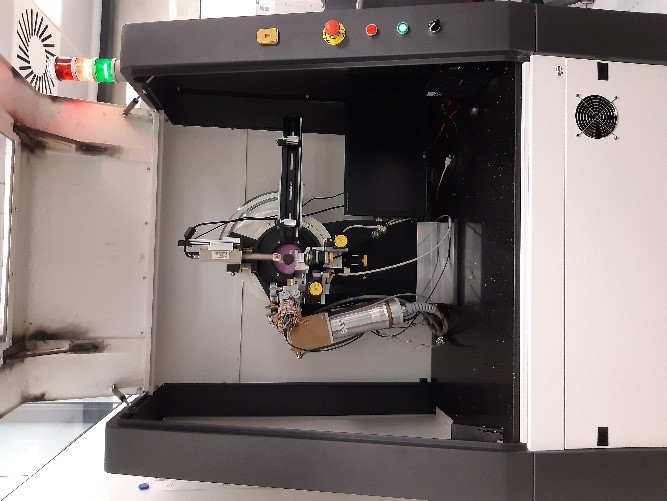X-Ray Reflectivity
Structural & Morphology Characterization (X-ray analysis)
XRR is a grazing incidence X-ray elastic scattering technique sensitive to surface electron densities. In the X-ray range the index of refraction is slightly smaller than one. This means that when a surface is illuminated with a collimated beam, total external reflection occurs up to the critical angle for total reflection which is dependent on the wavelength of the X-ray beam and the electron density of the material.
Above the critical angle the intensity of the reflected beam decreases exponentially with increasing angle. The intensity of the beam within the material increases with the angle and decreases with depth according to Beer-Lamber law. If the sample presents interfaces of materials with different electron densities, they will contribute to interference effects modulating the overall reflected intensity and giving rise to oscillations called Kiessig fringes. The thickness of the different layers influences the position of the fringes. The clearer the interfaces the stronger the interference effects. Roughness smooths away the interference patterns and decreases the overall reflected intensity and can therefore also be evaluated.

Instruments datasheets


